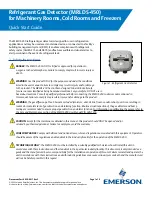
The STATIC test should always be carried out before a gas-detection operation. If there
are strong charges, a gas-detection operation should not be carried out, since the static
charge is renewed when a person moves around and new sparks may be created during
the gas-detection operation.
Alarm
If the detector produces an alarm (beep tone and red LED illuminates), gas is leaking from
the object. Depending on the amount of leaking gas, you should immediately open all
windows and doors, and avoid both open fire and the creation of sparks. Do not operate
electrical switches. Leave the room. If possible, turn off the gas supply.
You should immediately inform a qualified gas engineer about leaking gas
systems. Do not try to deal with the fault yourself!
Testing the gas-leak detector on a known source
Hold a gas lighter close to the gas sensor (1). Let gas leak out of the lighter without the
flame of the lighter burning. The gas-leak detector should now produce a beep tone and
the red display LED (2) should illuminate. If this is not the case, either the batteries are
depleted or the gas-leak detector is defective.
False alarm
Due to the high sensitivity of the detector, a false alarm due to other gaseous materials
such as aerosols (hair sprays, propellant gas, cigarette smoke etc.) cannot be excluded.
Maintenance
Check the gas-leak detector regularly for technical reliability. It can be assumed that safe
operation has become impossible, if:
the device shows visible damage
the device was stored under unfavorable conditions for a long period of time
it was exposed to extraordinary stress caused by transport
the test function described above no longer works correctly.
Use a soft cloth or brush to clean the outside of the device. Never use abrasive pads or
chemicals, since they may damage the housing or impair the function of the device.
Avoid touching the gas sensor (1) or cleaning it in any way. Apart from the battery
chamber, do not try to open the housing.
























